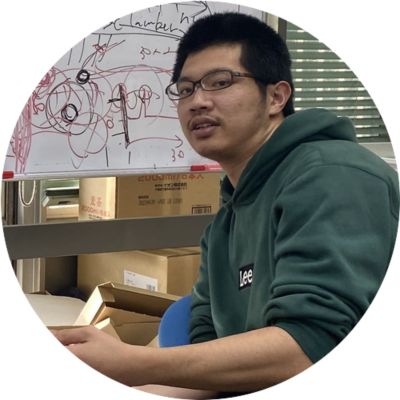Case Study
-
United States -
United Kingdom -
India -
France -
Deutschland -
Italia -
日本 -
대한민국 -
中国 -
台灣
-
-
產品系列
查看所有產品Ansys致力於為當今的學生打下成功的基礎,通過向學生提供免費的模擬工程軟體。
-
“I find Ansys Fluent simulation a useful tool for solving my research questions. For us basic morphologists, learning a programming language is a hurdle — even more so for CFD simulations. I think Fluent software is very easy to use for beginners because it is not text based, but rather graphic based, which is easy to understand. I am impressed to be able to see the invisible phenomenon of flow by using Fluent software, which has greatly broadened my research horizons.”
— Taro Okamura, Graduate Student, Graduate School of Environmental Studies at Nagoya University
Using computational fluid dynamics (CFD), graduate student Taro Okamura of the Graduate School of Environmental Studies at Nagoya University is leading research on the evolutionary process of how and why cetaceans acquired their fin shape.
Under the supervision of Nagoya professor Ken Yoda, Ph.D., and with access to Ansys Fluent® fluid simulation software through the Ansys Academic Program, Okamura uses CFD to understand how the diversity of cetacean fin morphology — their form, position, and size — relates to hydrodynamics.
Challenges
Cetaceans acquired three types of fins during the process of aquatic adaptation: pectoral fins, which are commonly called flippers, the dorsal fin, and the caudal fin (also called the tail fin or fluke). Although the dorsal fin has no joints and cannot move by itself, studies consistently recognize it as a posture stabilizer. However, the morphology of the dorsal fin varies significantly among species, prompting Okamura to ask: Does the dorsal fin perform the same stabilizer function in all cetaceans?
Traditional morphology research involves measuring and comparing animal shapes. However, fin morphology involves substantial diversity, including differences in fin shape among cetacean species and the functionality of those shapes in a fluid environment. Simulation helps researchers visualize and analyze diverse flow phenomena, but CFD can be challenging for non-simulation experts.

Marine biology researchers from the Nagoya University in Japan are using Ansys Fluent fluid simulation to understand fin funtion in dolphins and whales.
Engineering Solutions
Okamura finds Fluent software easy to use for beginners because it is graphic based rather than text based. This enables him to analyze and model shape functionality and compare different fin shapes from varying cetaceans. In addition, he can analyze extreme models that do not exist in nature, which provides deeper insight into shape differences.

This diagram depicts the fins found on most cetaceans, including dolphins and whales.
Benefits
- CFD simulation helps illustrate the fluid phenomena surrounding different fins and, in turn, provides a better understanding of fin purpose and shape function.
- Fluent software’s meshing capabilities help convert complex models into clean mesh.
- Fluent’s parallel computation function reduces computation time.
- Fluent software enables Okamura and the team to analyze and model shape functionality and compare different fin shapes from varying cetaceans.
- CFD simulation empowers Okamura and the team to create and analyze models that do not exist in nature, giving them more insight into shape variations.

Okamura simulates a dolphin in Ansys Fluent software to analyze the velocity flow around the mammal’s fins.

Graduate student Taro Okamura of the Graduate School of Environmental Studies at Nagoya University

Professor Ken Yoda, Ph.D., of the Graduate School of Environmental Studies at Nagoya University
讓我們開始吧
如果您面臨工程挑戰,我們的團隊將隨時為您提供協助。憑藉豐富的經驗和對創新的承諾,我們邀請您與我們聯絡。讓我們共同合作,將您的工程障礙轉化為成長和成功的機會。立即與我們聯絡,開始對話。










